Exclusive 2019 Update: VICTORY AT THE VA – West LA Veterans Administration master plan protects old nuclear dump from development


P. 11/76:
“If significant amounts of medical debris were encountered, all activity in that areas would be suspended and a Health and Safety Plan (HSP) would be prepared. The HSP would delineate waste handling procedures, disposition and personel protection. Because medical debris was encountered during grading operations, a HSP was prepared (Shirtz, 2000).”
This is significant because, as reported in “Nuke ‘Em High,” nothing of the sort seemed to have been done when construction workers for Brentwood School unearthed ‘significant amounts of medical debris’ in the construction of the “lower bench” football field:
This waste, under what was to become the school’s “lower bench” athletic fields, was so vast that in the late 1990s work was halted on the first part of the project, installing a 2,500-foot storm drain system, according to a January 2000 environmental site assessment conducted by Santa Ana-based URS Greiner Woodward Clyde. “The syringes were often in plastic bags,” the report said. “The foreman indicated that there was so much unsuitable material (refuse) that the project was temporarily shut down until directed by a federal official (name unknown) not to excavate further and continue with a modified installation plan. The modified plan provided for the use of 3 to 4 feet of crushed asphalt to be placed over those areas with remaining unsuitable material to support the drain pipe.”
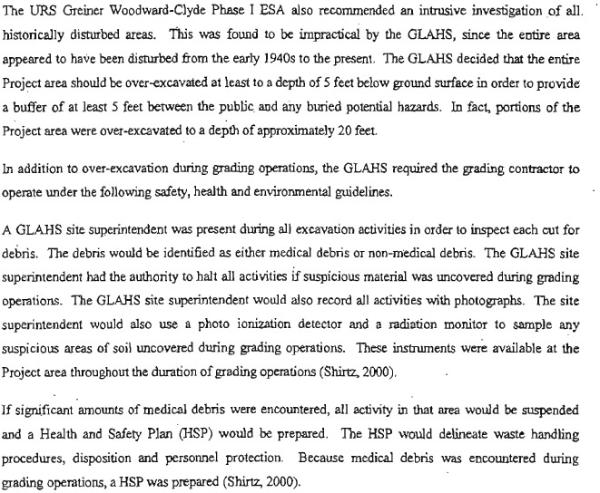
P. 22/76:
The following, with its statement that “(A)ll hypodermic needles, sharps or other medical debris encountered during grading operations were removed” also appears contradictory January 2000 URS report:
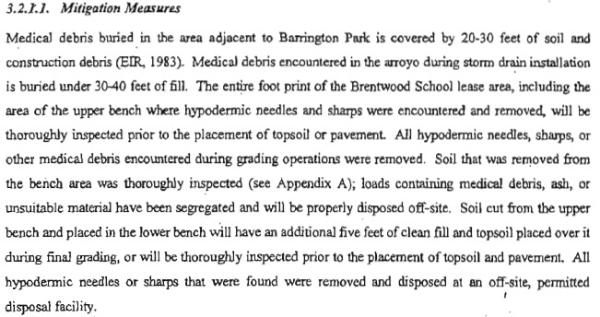
P. 24/76:
Three major errors in the following snippet: “GLAHS buried low-level radioactive medical waste in the three burial pits with the approval of the United States Nuclear Regulatory Commission (NRC) under License No. 04-00181-04 from approximately 1960 though 1968. According to the NRC, the medical waste consisted primarily of short-lived tritium and carbon-14.”
First falsehood: The NRC did no such thing; indeed it was formed out of the Atomic Energy Commission in 1974 so it couldn’t have since it didn’t exist.
Second falsehood: The NRC did not issue any “approval” according to all available records obtained by Waxman and EnviroReporter.com.
Third falsehood: Tritium and carbon-14 are not “short-lived.” Tritium, with a half-life of 12.3 years, is considered “intermediate lived,” and carbon-14, with a half-life of 5,730 years is “longer-lived” according to numerous sources including the last comprehensive analysis of radiation waste done in this state in 2000, “Management and Disposal of California’s Low-Level Radiation Waste: A Report to Governor Gray Davis.”

P. 24/76:
As previously reported in “Real Hot Property,” the NRC inspection in May of 1981 was useless in terms of the type of inspection it was. Dr. Chris Whipple of Environ, hired by Brentwood School in December 2006 to do an assessment of the site after this issue appeared in the Los Angeles Times, agreed with this assessment in an interview with EnviroReporter.com the next month. He also said that in a conversation with the current head of the NRC for this area, that the NRC head also agreed that the 1981 inspection was useless.
The fact that the April 1983 inspection found nothing suggests that the boring, budgeted in the VA’s Phase 2 of the current investigation of the dump, could prove useless. In solicited comments to Los Angeles Councilmember Bill Rosendahl in September 2007, this EnviroReporter.com suggested that incremental excavation be the method of investigating and remediating the dump as it would not repeat the April 1983 survey which, essentially, looked for needles in a haystack, and the proposed excavation would target the known parts of the dump first. Nuke dump commentator, Dr. Bennett Ramberg, agrees with this assessment.
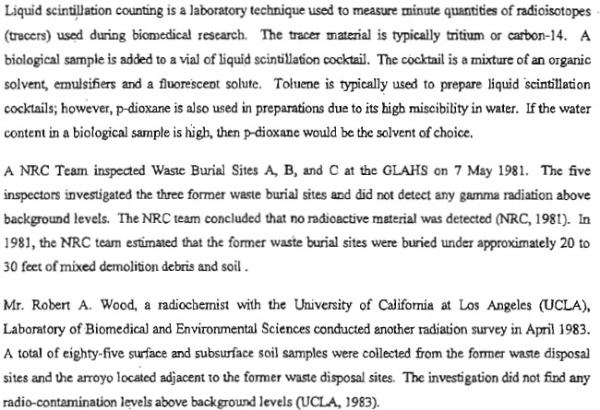
P. 37/76:
Photo caption: “Photo 7 – Burnt debris encountered at approx. 14 feet below ground surface in the vicinity of the planned basketball courts.”
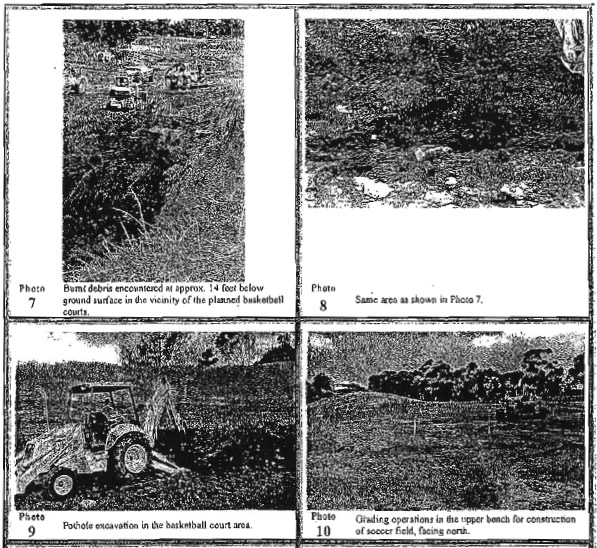
P. 39/76:
“An intact syringe (needle attached) uncovered at the upper bench where the soccer fields are being constructed.”
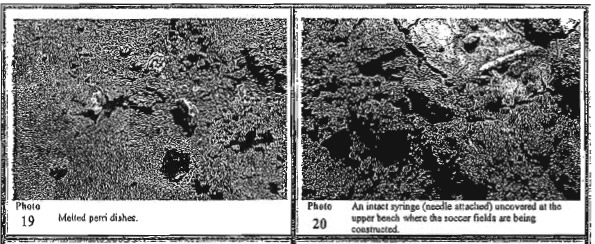
P. 73/76:
Figure 2 calls radiation waste sites in arroyo “BURIED HISTORICAL SOLID WASTE DISPOSAL AREA”
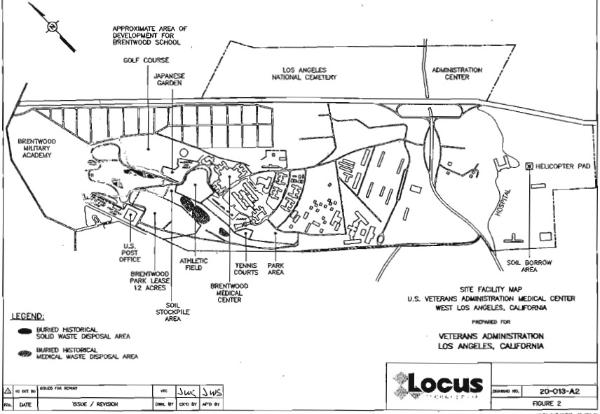
P. 76/76:
Figure 3 calls ‘ash pits’ on Brentwood School leased area same thing: “BURIED HISTORICAL SOLID WASTE DISPOSAL AREA”
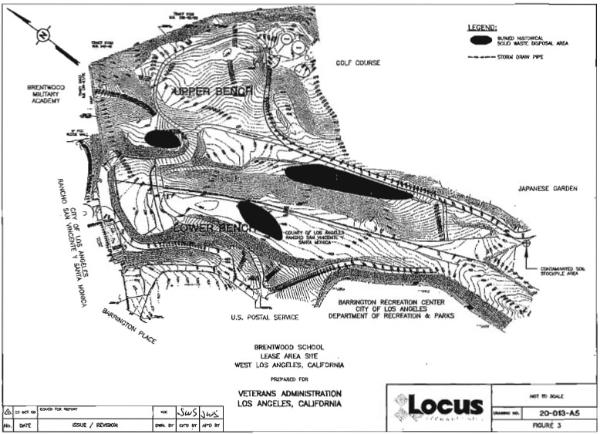
Exclusive 2019 Update: VICTORY AT THE VA – West LA Veterans Administration master plan protects old nuclear dump from development












Recent Comments